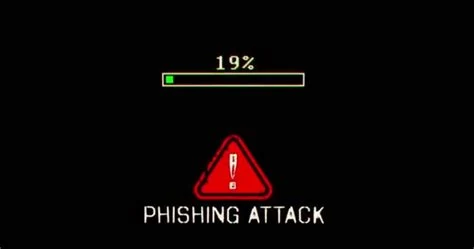The Evolution of Phishing Attacks: From Basic Scams to Sophisticated Threats
The Evolution of Phishing Attacks: From Basic Scams to Sophisticated Threats
Welcome to our comprehensive guide on the evolution of phishing attacks, a critical issue in cybersecurity today. As the digital world grows increasingly complex, so do the tactics employed by cybercriminals. From rudimentary scams to highly sophisticated schemes, phishing has evolved significantly. Understanding this evolution is essential for anyone looking to safeguard themselves and their organizations from these ever-present threats.
1. Introduction to Phishing
Phishing is a type of cyber attack where attackers deceive individuals into providing sensitive information, such as login credentials or financial details, by masquerading as a trustworthy entity. Initially, these attacks were relatively simple and easy to recognize. However, as technology and attack methods have advanced, phishing attacks have become more complex and dangerous.
2. The Early Days: Basic Scams
2.1 The Rise of Email Scams
In the early days of phishing, attackers used basic email scams to trick users. These emails were often poorly written, riddled with spelling errors, and contained suspicious links. They typically claimed to be from banks or other reputable organizations, asking recipients to "verify" their account information.
2.2 The Nigerian Prince Scam
One of the most infamous early phishing scams was the "Nigerian Prince" email. This scam involved an email from a supposed Nigerian royal or government official seeking help to transfer a large sum of money, promising a reward in return. Despite its simplicity, this scam managed to fool many people, demonstrating that even basic phishing attempts could be effective.
3. The Middle Era: Targeted and Spear Phishing
ALSO LEARN ABOUT THE TYPES OF PHISHING ATTACKS HERE
3.1 The Emergence of Spear Phishing
As awareness of phishing grew, attackers began to refine their tactics. Spear phishing emerged as a more targeted form of phishing, where attackers customized their emails for specific individuals or organizations. This approach involved gathering personal information to make the scam more convincing and increase the likelihood of success.
3.2 Social Engineering Tactics
During this period, social engineering tactics became more prevalent. Attackers leveraged publicly available information from social media and other sources to craft more personalized and convincing messages. These attacks could involve fake job offers, urgent requests for help, or invitations to exclusive events.
4. The Modern Era: Advanced and Multifaceted Threats
4.1 Business Email Compromise (BEC)
Business Email Compromise is a sophisticated phishing scheme targeting companies. Attackers often impersonate executives or employees to manipulate financial transactions or gain unauthorized access to sensitive information. BEC attacks exploit trust within organizations and can lead to significant financial losses.
4.2 Phishing-as-a-Service
In the modern era, phishing has become a "service" offered by cybercriminals on the dark web. These services provide tools, templates, and even customer support to help individuals launch their own phishing campaigns. This commercialization of phishing has made it accessible to a broader range of attackers.
4.3 Multi-Channel Attacks
Today's phishing attacks are no longer limited to email. Attackers use various channels, including SMS (smishing), social media (social phishing), and voice calls (vishing), to reach potential victims. This multi-channel approach increases the chances of successfully deceiving targets.
4.4 Sophisticated Deception Techniques
Modern phishing attacks often employ advanced deception techniques, such as creating fake websites that closely mimic legitimate ones, using SSL certificates to add credibility, or deploying machine learning algorithms to craft highly convincing phishing messages. These tactics make it increasingly difficult for individuals to discern genuine communications from malicious ones.
5. The Future of Phishing Attacks
As technology continues to evolve, so will phishing tactics. Emerging technologies like artificial intelligence and deepfake technology could be leveraged to create even more convincing attacks. Staying informed and vigilant is crucial to staying ahead of these threats.
6. Protecting Yourself from Phishing
6.1 Education and Awareness
One of the most effective defenses against phishing is education. Regular training on recognizing phishing attempts and understanding the latest threats can significantly reduce the risk of falling victim to these scams.
6.2 Technological Defenses
Implementing robust security measures, such as multi-factor authentication, email filtering solutions, and anti-phishing software, can help protect against phishing attacks.
6.3 Verification Practices
Always verify the authenticity of any communication requesting sensitive information. Contact the organization directly using known contact details rather than relying on the information provided in the suspicious message.
7. Conclusion
The evolution of phishing attacks reflects the broader trends in technology and cyber threats. From basic scams to sophisticated threats, phishing has become more complex and challenging to combat. By staying informed, adopting best practices, and leveraging advanced security measures, individuals and organizations can better protect themselves against these ever-evolving threats.
For more information on cybersecurity and how to protect yourself from phishing and other cyber threats, explore our resources or contact our team of experts today.
Thank you for visiting our guide on the evolution of phishing attacks. Stay safe, stay informed, and keep ahead of the threats in the digital age.





I just forget my email password, how can I reset without getting code into phone number
ReplyDelete